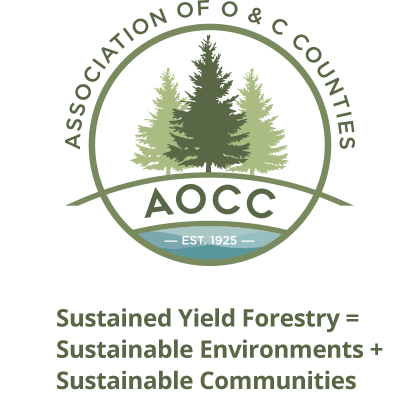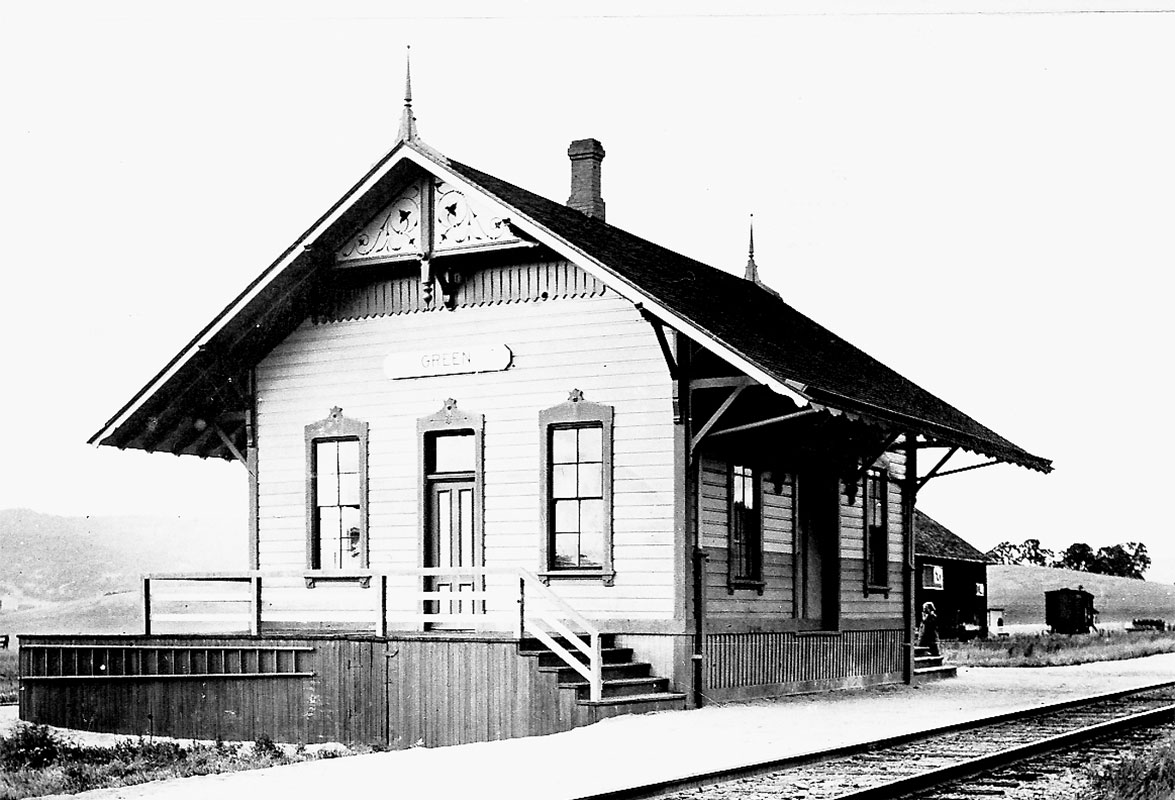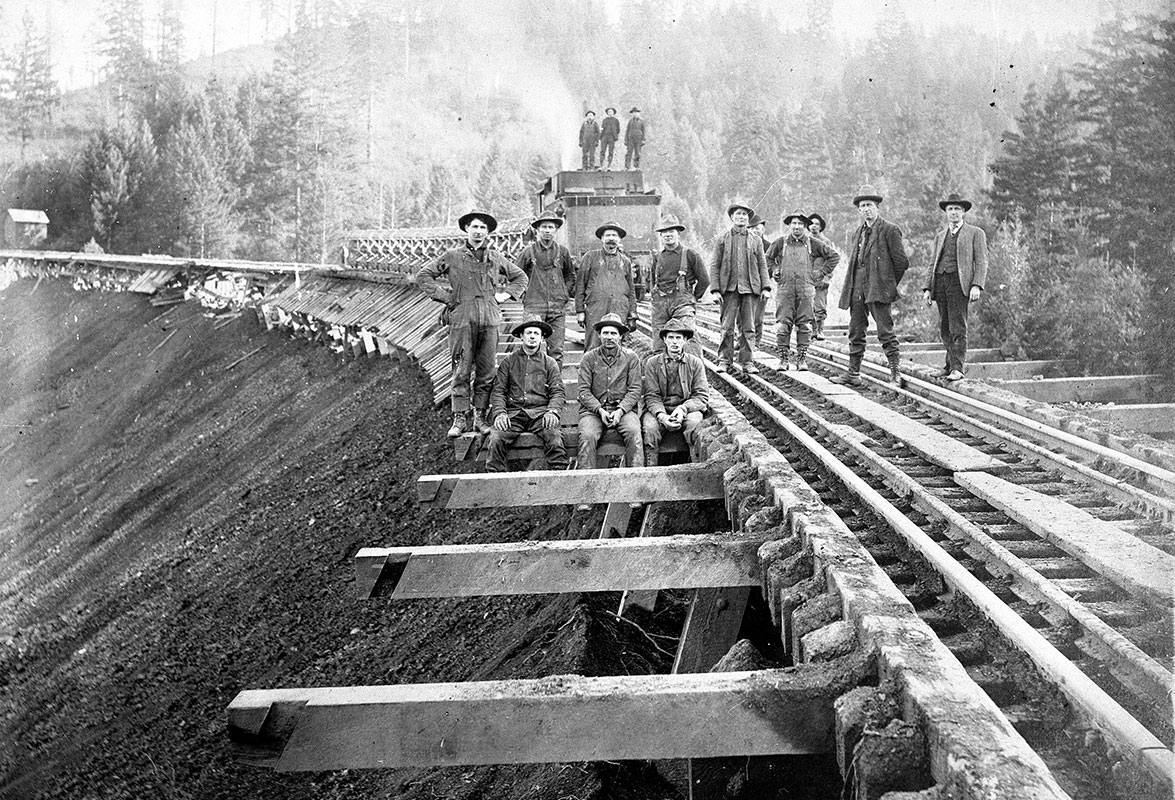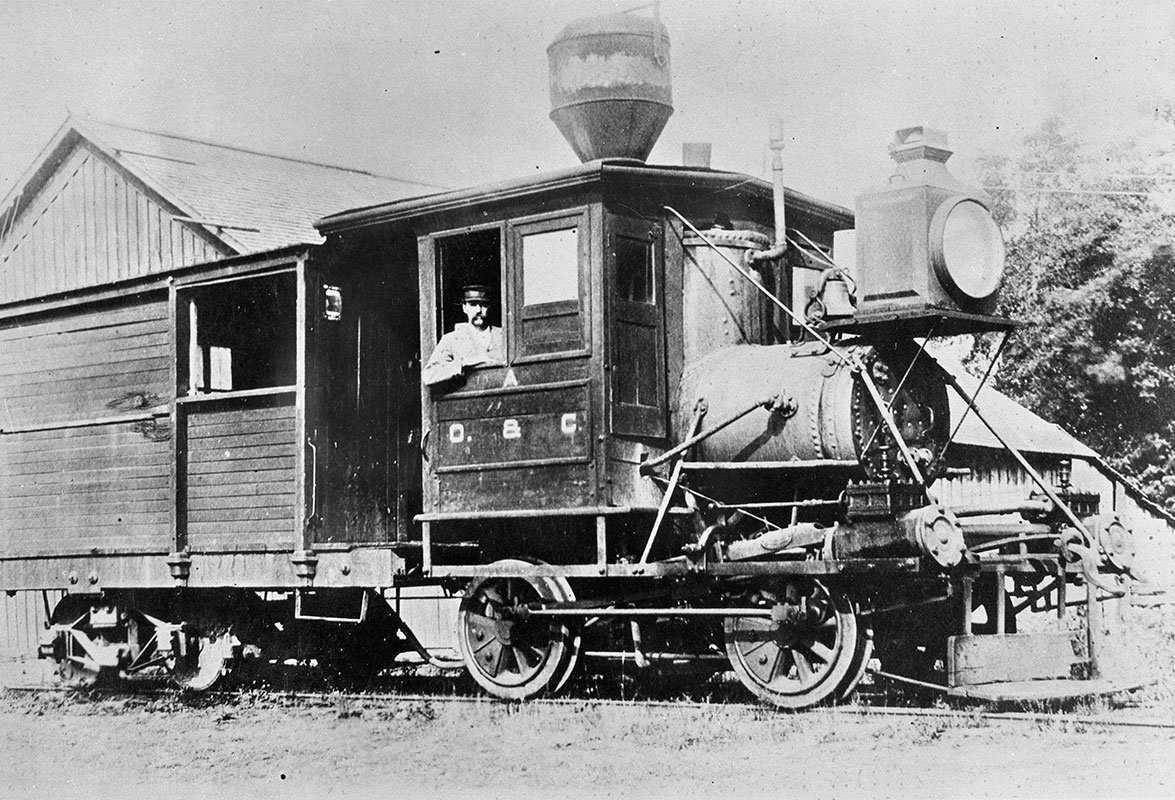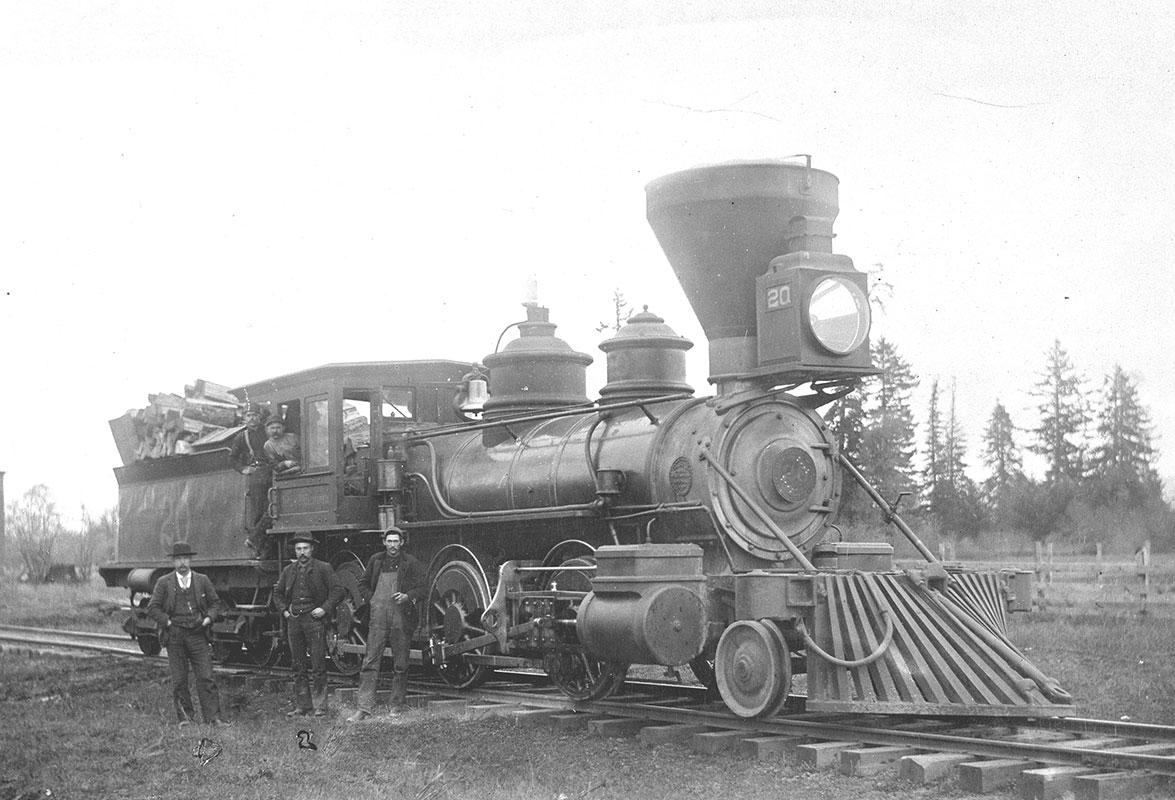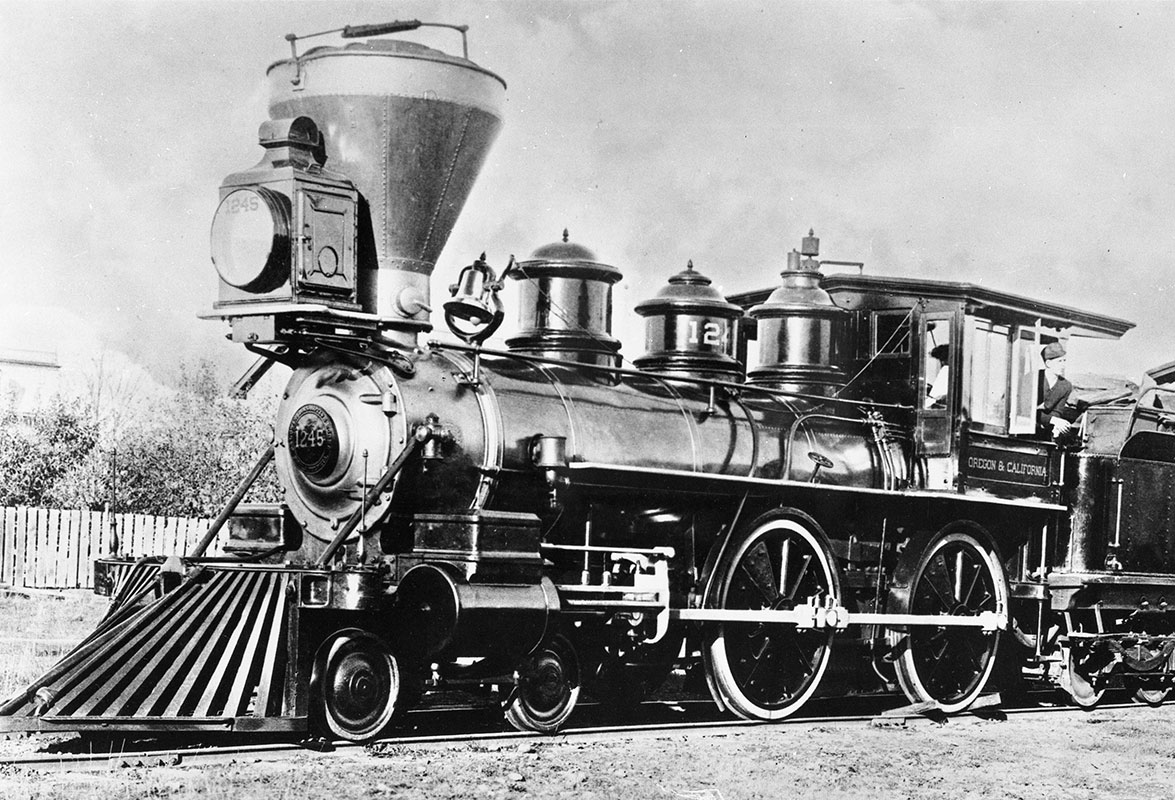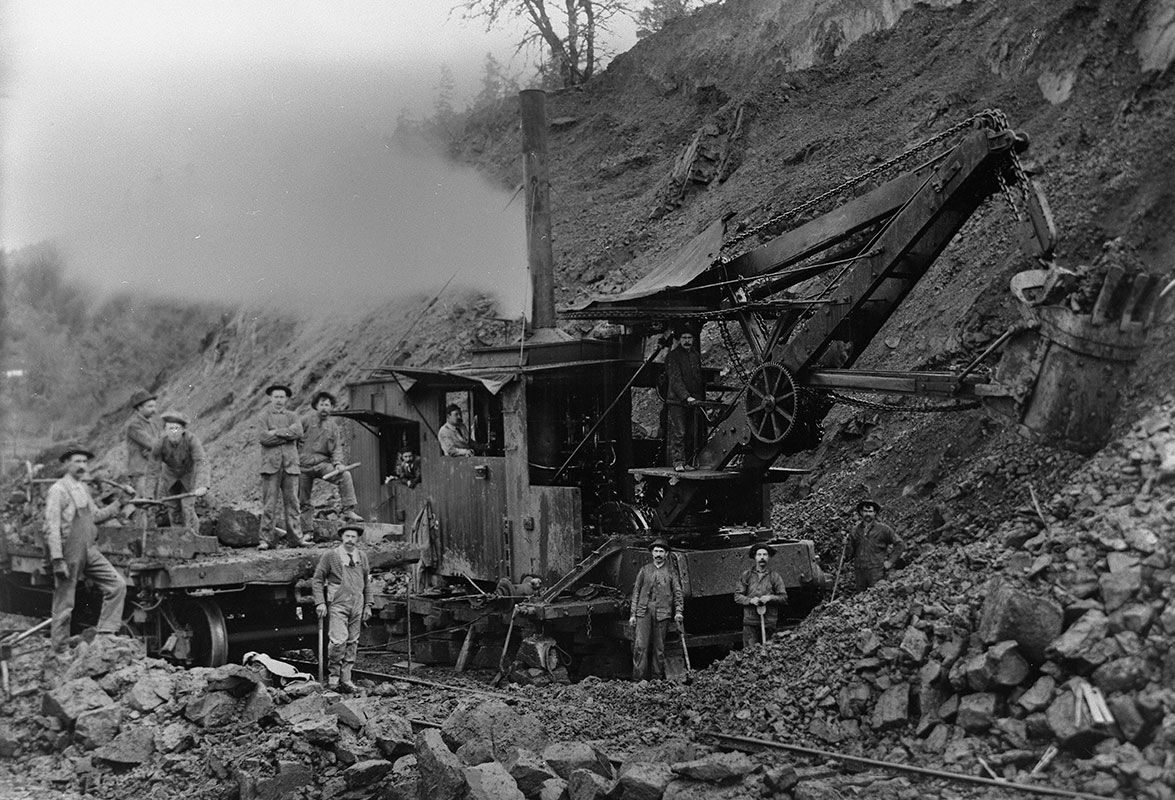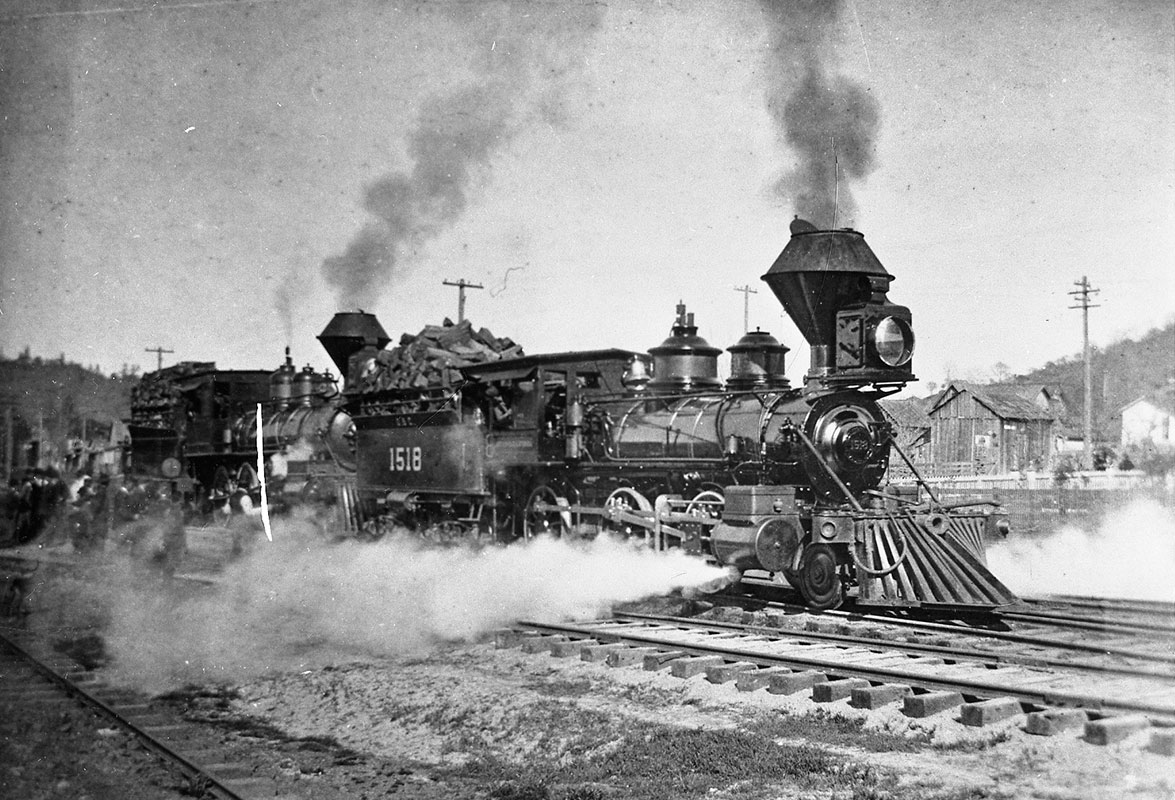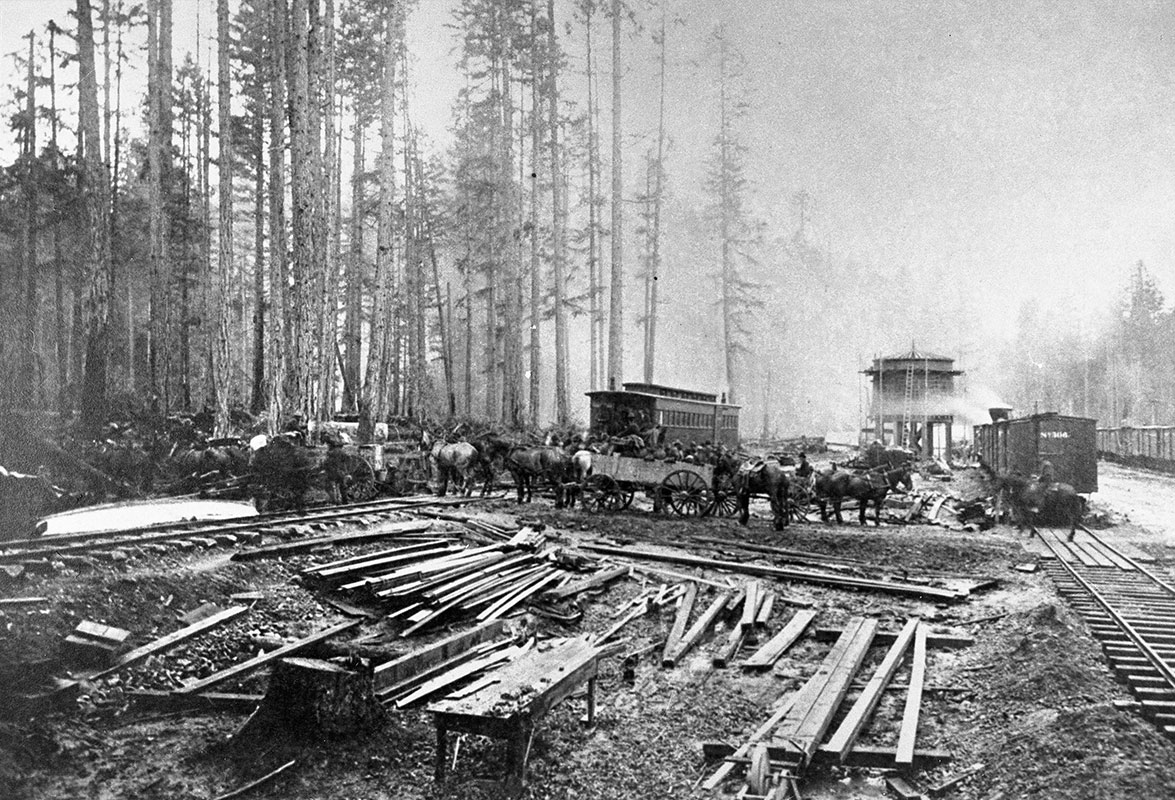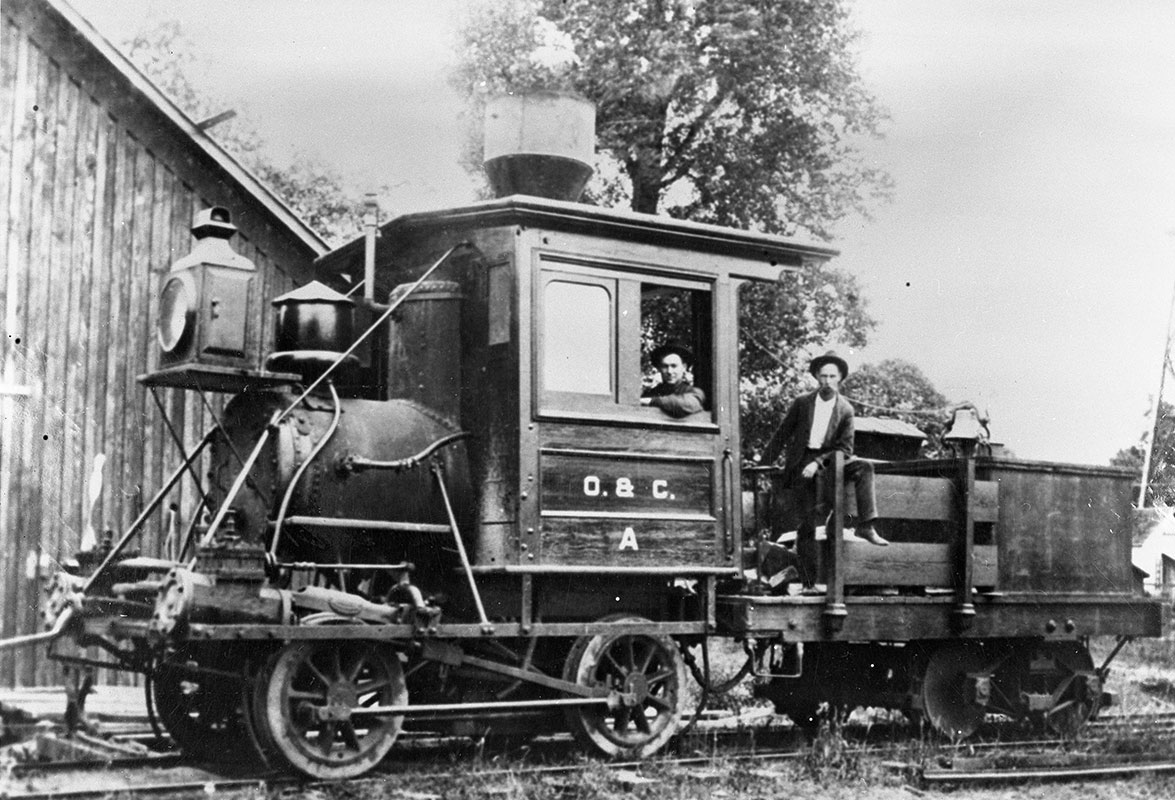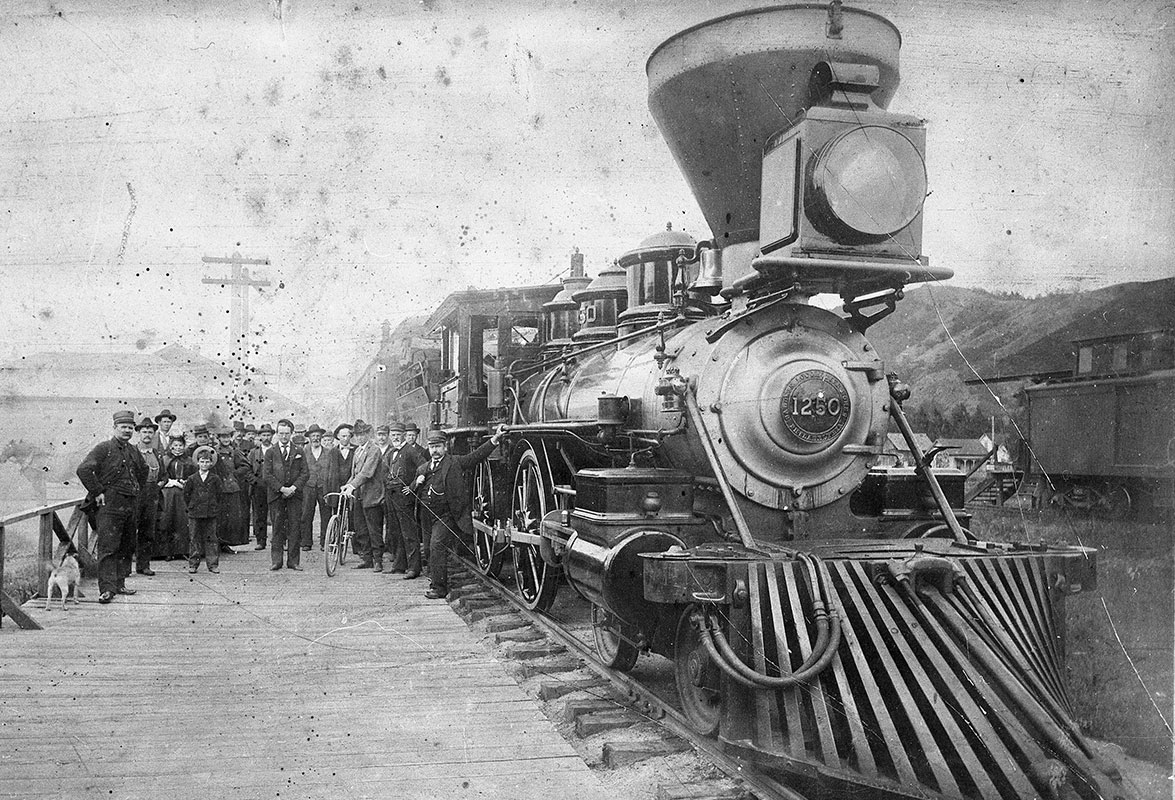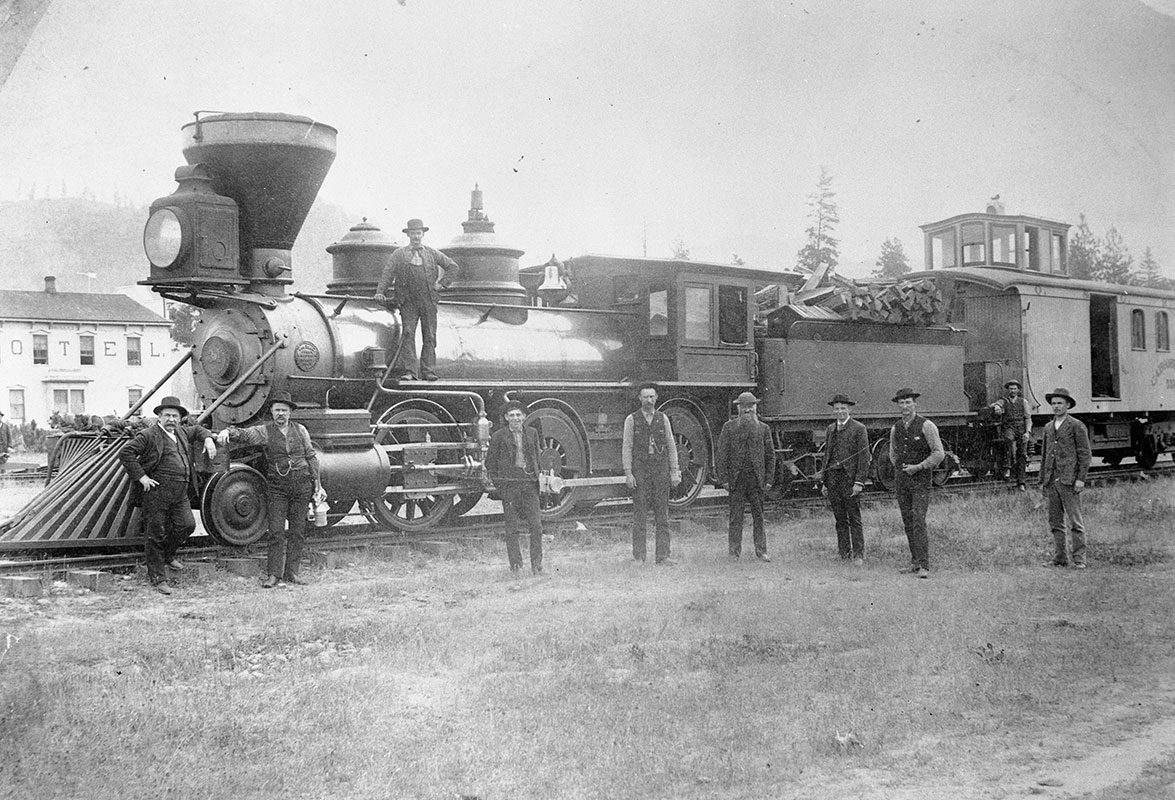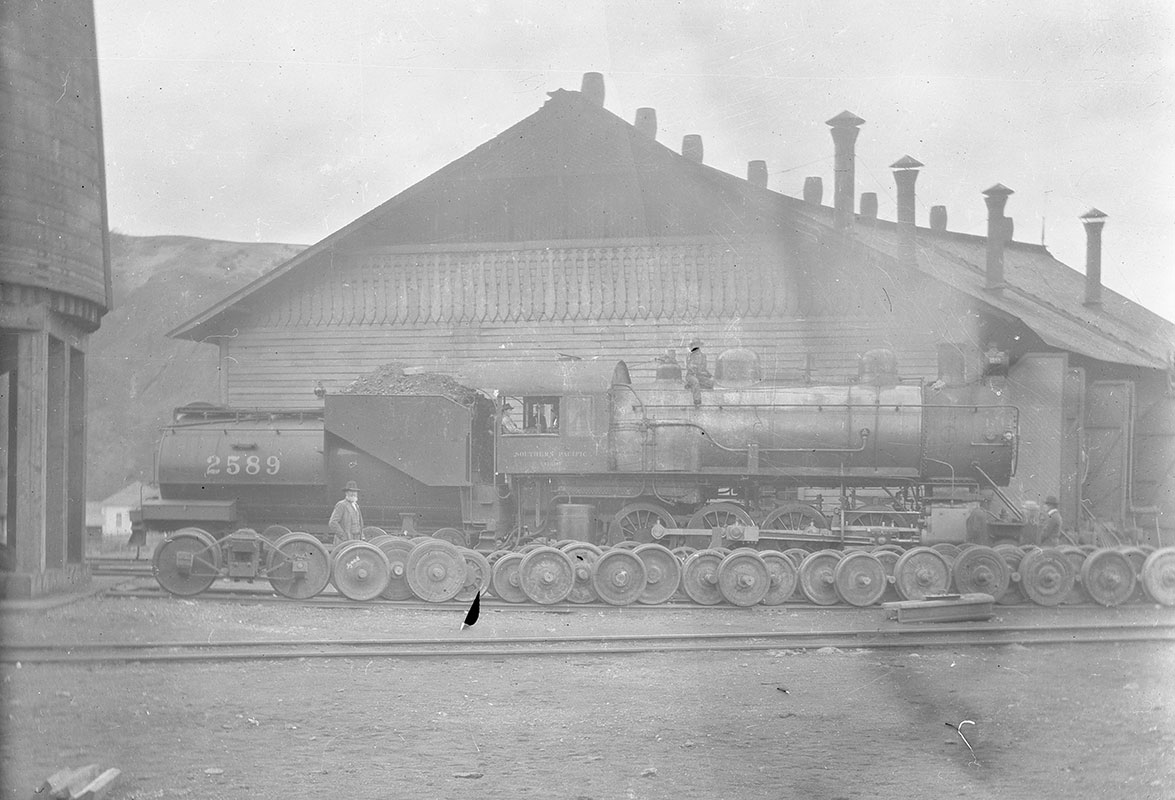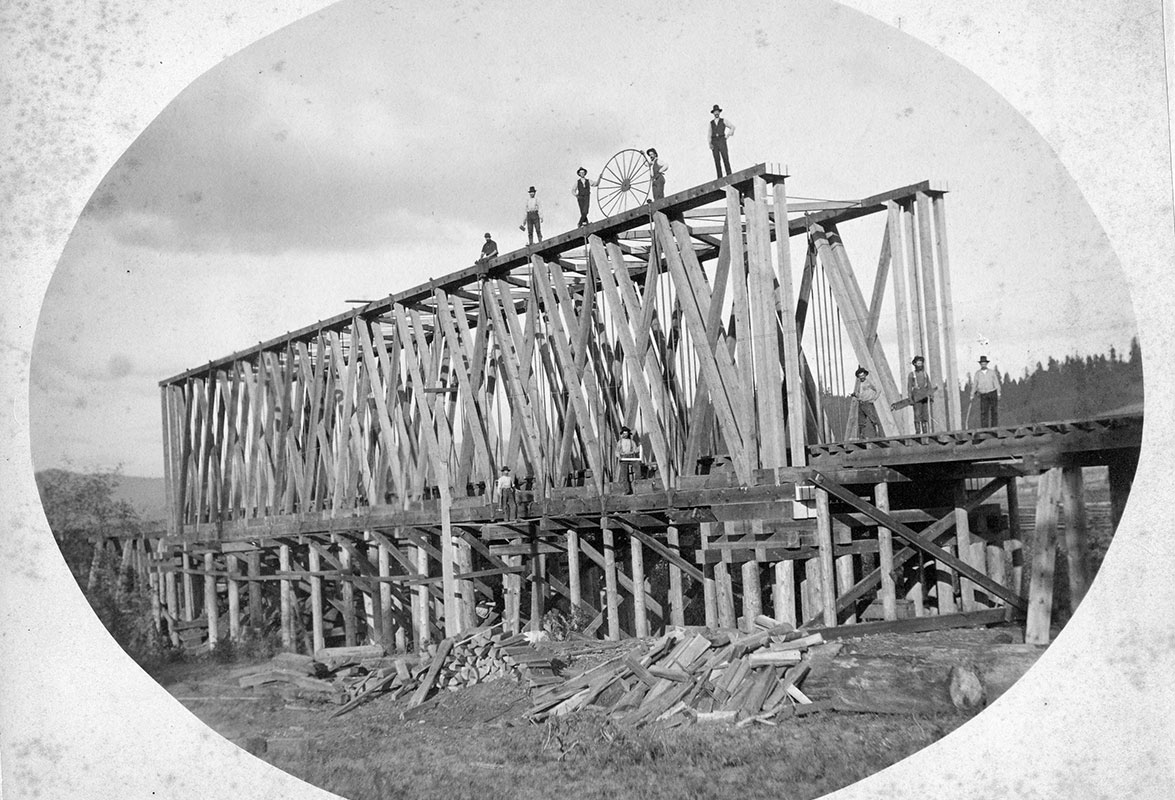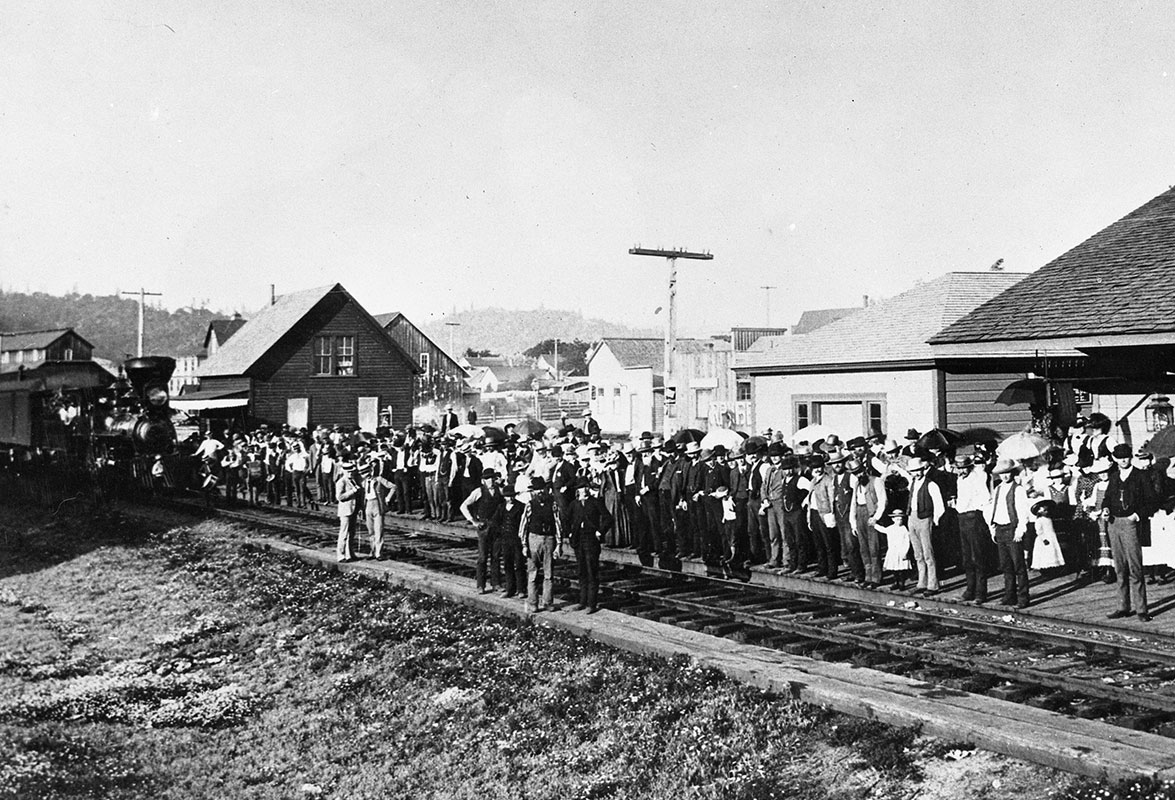Land grants to subsidize building of railroads for military and economic development purposes were common in the late 1800s. While transcontinental routes were still under construction, Congress turned its attention to a north-south route through Oregon. Between 1866 and 1870, Congress passed and then amended legislation that ultimately resulted in the grant of nearly 4,000,000 acres in Oregon to the Oregon and California (O&C) Railroad Company. The land grant was in exchange for construction of a rail line through Western Oregon from Portland to the California border near Ashland.
As construction progressed, the Railroad Company was to receive alternating sections of land on both sides of the right-of-way spanning 20, and in some cases 30 miles, on each side. The result was a checkerboard band of lands 40 to 60 miles wide the full length of the state that transferred from federal ownership into private ownership by the Railroad Company. The lands conveyed were eventually to be sold by the Railroad Company, but were subject to the conditions they be resold only in 160-acre parcels to “actual settlers” for no more than $2.50 per acre.
The railroad was built, but the Railroad Company failed to honor its obligation to sell O&C Lands to “actual settlers” in the small parcels and for the prices required. Other than in the Willamette Valley, much of the route of the railroad was through rugged terrain unsuitable for farming and not attractive to “actual settlers.” But the grant lands had value. Stands of timber on them were soon worth more than $2.50 per acre and were very attractive to timber speculators who could not legally qualify to purchase the lands. The Railroad Company proceeded to violate the terms of the grant in multiple respects:
“163,430.28 acres of the granted lands were sold by the Oregon & California Railroad Company prior to May 12, 1887, nearly all of which were sold to actual settlers, in small quantities, although in a few instances the quantities exceeded 160 acres to one purchaser and the prices were slightly in excess of $2.50 an acre. A rapidly increasing demand for the lands in large quantities and at increased prices commenced about 1889 or 1890 and has continued ever since. From 1894 to 1903 some of the granted lands were sold to persons not actual settlers in quantities and at prices exceeding the maximum designated in the provisos, and in several instances in quantities of from 1,000 to 20,000 acres to one purchaser at prices ranging from $5 to $40 an acre; and in one instance a sale of 45,000 acres at $7 an acre to a single purchaser. About 5,306 sales were made, aggregating 820,000 acres, of which sales about 4,930 were for quantities not exceeding 160 acres and 376 sales in quantities exceeding 160 acres to one purchaser, aggregating 524,000 acres. The latter sales were to persons other than actual settlers and for other purposes than settlement and at prices in excess of $2.50 an acre; and approximately 478,000 acres were sold since 1897 and approximately 370,000 of the 524,000 were sold to 38 purchasers in quantities exceeding 2,000 acres to each purchaser. * * * On January 1, 1903, the company withdrew from sale all of its lands and refused to accept offers for any of them, asserting that they were timber lands and unsuitable for settlement.” O&C Railroad Company v. United States, 238 U.S. 393, 408 (1915).
The Railroad Company’s refusal to sell the O&C grant lands caused strong and vocal opposition from local governments and the public. As a result of the outcry, the Oregon Legislature asked Congress to intervene, to force the Railroad Company to resume land sales. In 1908 Congress directed the Attorney General to institute proceedings against the Railroad Company, which by then had been acquired by, and operated as a division of, the Southern Pacific Railroad. Instead of seeking enforcement that would cause the Railroad Company to resume land sales, the Attorney General instituted an action seeking forfeiture.
Many years of litigation followed. A decision by the District Court in 1911 declared the lands subject to forfeiture. United States v. O&C Railroad Co. et. al., 186 F. 861 (D. Or. 1911). Further proceedings in that case culminated with a decree of forfeiture in 1913, whereupon the Railroad Company ceased paying property taxes on the lands, and pursued an appeal. The Supreme Court later confirmed that the grant terms had been violated, but the rail line had been built as promised, so complete forfeiture of the remaining lands was not appropriate. O&C Railroad Company v. United States, 238 U.S. 393 (1915). The Supreme Court reversed the decree of the District Court, enjoined further disposition of the lands by the Railroad Company and invited Congress to formulate an appropriate remedy.
Congress responded with the Chamberlain-Ferris Act of June 9, 1916, which declared that all grant lands still held by the Railroad Company were “revested” to ownership by the United States. The Chamberlain-Ferris Act also provided for compensation to the Railroad Company for the O&C Lands revested, subject to an accounting that would assure the Railroad Company received no more than $2.50 per acre for the lands it had been granted.
The O&C lands had been in private owenship and subject to local property taxes for up to 40 years. Had the lands not been taken back by the federal government, they would have remained in private ownership, providing an economic base for private industry and a tax base for local governments. Congress recognized that revestment deprived Western Oregon of part of its economic foundation:
“* * * [T]he people in [the] State [of Oregon] were bitter in blaming the Federal Government for inaction in this situation for over fifty years. Moreover, the proposed revesting of title in the United States would remove from the tax roles of the State these huge tracts of land, theretofore taxable, and in this transition, the schools and roads of the State would suffer. Congress recognized the justice of these claims, and it was for this purpose that it directed a division of the proceeds from the lands among the state, the counties, and the Federal Government.” Clackamas County, Oregon v. McKay, 219 F.2d 479, 483 (9th Cir. 1954), judgment vacated as moot 349 U.S. 909 (1955).
The Chamberlain-Ferris Act therefore established the “Oregon and California Land-Grant Fund” within the United States Treasury, and provided a method for distribution of income that was expected as the lands were sold back into private ownership. Once the United States was reimbursed for the cost of compensating the Railroad Company, income from timber and land sales was to be distributed 25 percent to the O&C Counties, 25 percent to the State of Oregon and the remainder to the United States. The distribution method was designed to compensate the State and O&C Counties for their inability to derive tax benefits from the reinvested lands, until those lands were sold back into private ownership.
The Chamberlain-Ferris Act revenue distribution failed. Between 1916 and 1926, land and timber sales were scarce and very little revenue was generated. As a result, payments to the O&C Counties and the State of Oregon never materialized. The Association of O&C Counties (AOCC) was formed in 1925 to advocate for legislative changes that would remedy the failures of the Chamberlain-Ferris Act. In response to AOCC’s advocacy, and to assist the O&C Counties, Congress passed the Stanfield Act of July 13, 1926, which provided for payments from the general fund of the U.S. Treasury to the O&C Counties. The payments were in lieu of taxes which the O&C Counties could have collected had the O&C Lands been in private ownership.
The Stanfield Act provided that in-lieu payments would be reimbursed from the O&C Counties’ share of expected funds in the Chamberlain-Ferris Act’s O&C Land-Grant Fund from future land and timber sales. To the extent that the Stanfield Act in-lieu payments exceeded the O&C Counties’ share of the Fund, the excess became a reimbursable charge against the O&C Counties’ share of future deposits in the Fund.
Expected land and timber sales never materialized. Between 1926 and 1936, the O&C Counties’ share of revenues from the O&C Lands was insufficient to reimburse the United States for its Stanfield Act in lieu payments. There was therefore an ever-increasing reimbursable charge against the O&C Counties’ share of the O&C Land-Grant Fund . In addition, during the early years of the depression, the Comptroller General of the United States issued an opinion that cast doubt on whether the Stanfield Act payments could continue in the absence of adequate land and timber sale revenues, with the result that payments completely ceased. The Stanfield Act was not working to provide Counties with revenues the way it was intended.
The Stanfield Act’s failure to remedy economic injuries to the O&C Counties from reinvestment of the O&C lands corresponded in time with increasing criticisms of the General Land Office’s lack of management of the O&C Lands. The policy between 1916 and 1937 was to cut the timber and dispose of the cut-over lands through sales to private owners as rapidly as possible. There was no provision made for replanting the lands and no consideration given to other resources. The policy of liquidation of timber assets and sale of the land without regard to long-term benefits to local economies came under fire:
“No provision was made for the administration of the land on a conservation basis looking toward the orderly use and preservation of its natural resources. The [Chamberlain-Ferris and Stanfield] act[s] provided that the timber should be sold ‘as rapidly as reasonable prices can be secured therefore on a normal market,’ and the cut-over lands disposed of for agricultural purposes. Clean cutting was contemplated. Seed trees were not to be preserved, nor was an provision made for the protection of stream flow. The probable effect of such a cutting policy on community industries was not considered.” Report to accompany H.R. 7618, 75th Cong. 1st Sess., No. 1119 at 2.
A principal proponent for change was David Mason, a well known Oregon forester, who opposed liquidation of forest assets. Mason envisioned retention of the lands by the federal government and management of them according to then-emerging concepts of sustained yield, under which harvests would occur across the landscape over time, based on what the lands were producing, with harvests and replanting in a continuous and permanent cycle.
AOCC was also an advocate for change, along with David Mason and others. In response to the concerns of the O&C Counties and others who favored change, Congress passed the O&C Act of August 28, 1937. The O&C Act is currently codified at 43 USC 1181a through 1181f.

